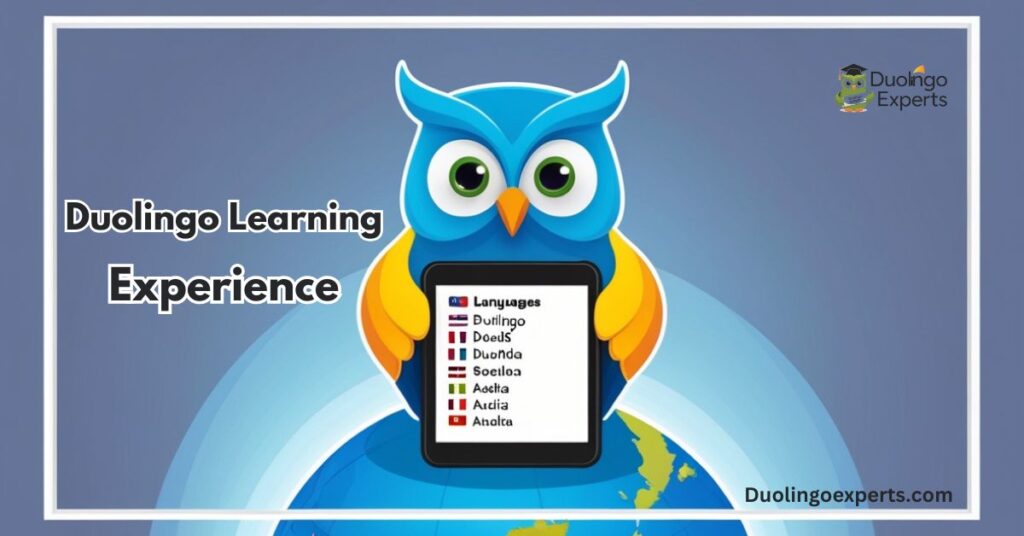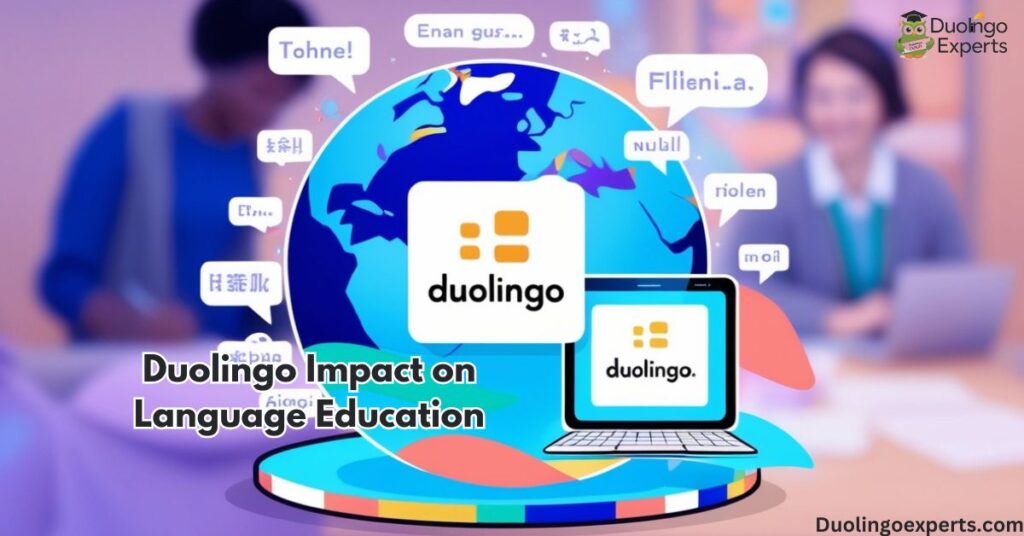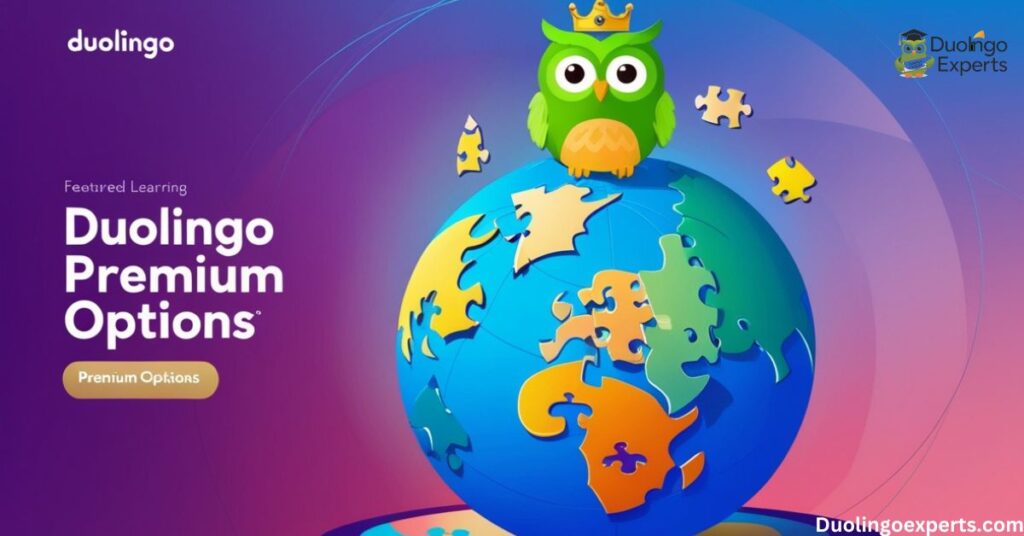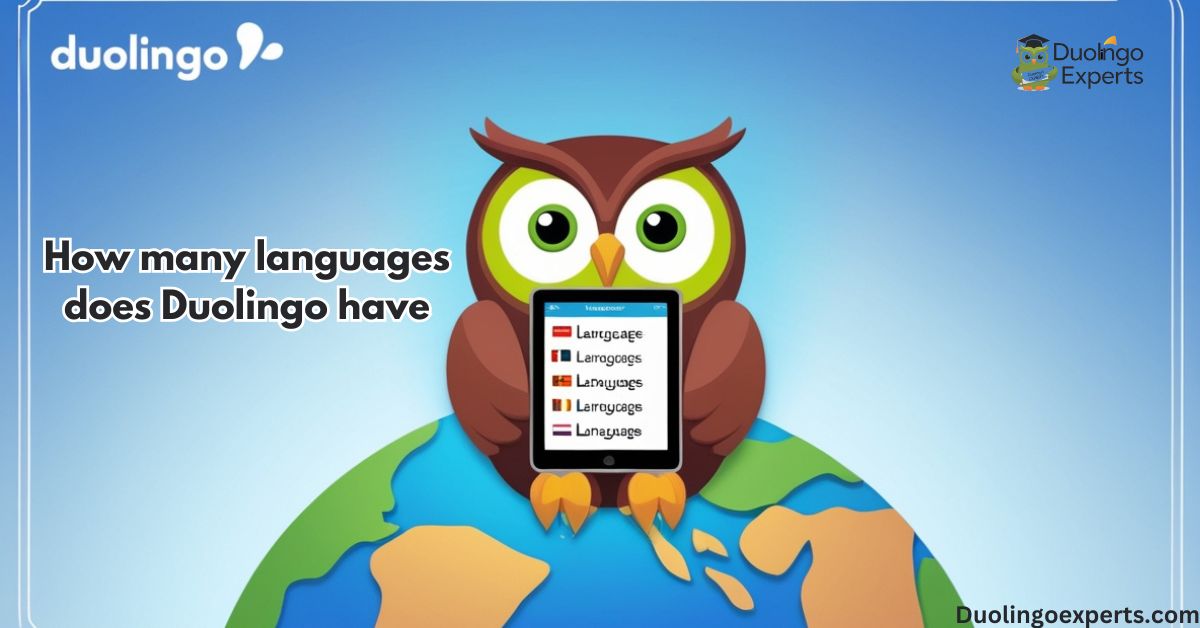Duolingo has grown from a small startup to one of the world’s leading language learning apps. With its interactive lessons, gamified learning features, and a constantly expanding list of available languages, Duolingo has attracted over 500 million users globally, making language learning accessible to millions. Its innovative approach has reshaped the way people engage with languages, from traditional educational tools to mobile-first, AI-powered experiences.
But as Duolingo continues to expand, many people wonder: How many languages does Duolingo have? What languages are available, and how does Duolingo manage to support such a broad and diverse selection of languages, ranging from widely spoken ones to more niche or even fictional languages? In this article, we will explore Duolingo’s vast language offerings, the learning experience, and the technologies behind the app that make it so unique.
Understanding Duolingo’s Global Reach
Duolingo offers learners access to over 43 languages (and counting), making it one of the most diverse platforms for language acquisition. Unlike traditional language courses that focus on a select group of widely spoken languages, Duolingo provides something for every type of learner—from those studying Spanish or French for travel or work, to enthusiasts wanting to learn less common languages like Swahili or Navajo, or even constructed languages like Klingon and High Valyrian.
The appeal of Duolingo lies in its ability to offer language education that fits into the digital age, where gamification and interactive lessons make learning feel more like playing a game than a task. Users earn points, complete challenges, and progress through levels, ensuring the process stays engaging. But the real strength of Duolingo is its ability to combine these fun elements with effective learning techniques powered by advanced machine learning algorithms, AI-based personalization, and real-time feedback.
In the next sections, we will dive deeper into Duolingo’s vast language offerings, how the app’s unique learning technology works, and how you can use Duolingo to master your chosen language.
Current Language Course Offerings on Duolingo
Duolingo offers more than 43 language courses, making it one of the most comprehensive language learning platforms today. These courses are available to learners in more than 119 countries, and the app has become the go-to tool for anyone looking to learn a new language or improve their proficiency.
Popular Language Courses
Some of Duolingo’s most frequently chosen languages are those that boast millions of speakers worldwide. These include widely spoken languages such as Spanish, French, German, Portuguese, Korean, and Mandarin Chinese. Let’s explore these in more detail:
- Spanish: Widely spoken across Spain, Latin America, and parts of the United States, Spanish is the most popular language on Duolingo, making it an obvious choice for learners.
- French: Spoken across Europe, North America, and Africa, French ranks highly among Duolingo users, offering learners access to cultures and global opportunities.
- German: As one of the most spoken languages in Europe, German has a rich cultural and historical legacy, making it an essential language for business and travel.
- Portuguese: With significant populations in Brazil and Portugal, Portuguese attracts a large number of learners, particularly those interested in South America.
- Mandarin Chinese: The most spoken language in the world, Mandarin Chinese is crucial for anyone doing business in China or interested in Chinese culture.
- Korean: South Korea’s global influence, along with the rise of K-pop and Korean dramas, has led to a surge in interest in the Korean language, making it one of Duolingo’s top languages.
These languages are ideal for beginners looking to get started with language learning and those who want to achieve proficiency quickly due to their widespread use.
Less Common and Niche Language Offerings
Duolingo doesn’t just focus on widely spoken languages. It offers a range of less common languages, including:
- Swahili: Spoken in East Africa, Swahili is a lingua franca in the region and plays an important role in trade, culture, and politics.
- Latin: Although no longer spoken as a native language, Latin remains crucial for understanding European languages, history, and scientific terminology.
- Navajo: A Native American language with fewer speakers, Navajo is an important part of North American culture and heritage, and Duolingo’s course helps preserve this endangered language.
- Scottish Gaelic: A Celtic language with a rich cultural history, Scottish Gaelic is spoken by a small but dedicated community, making it an intriguing option for those interested in languages with historical significance.
- Yiddish: A language with a deep cultural history, particularly among Jewish communities, Yiddish is still spoken today by millions in religious and cultural contexts.
Duolingo’s inclusion of these less common languages reflects its commitment to making language learning accessible to more than just the majority language groups, encouraging cultural preservation and a deeper understanding of linguistic diversity.
Fictional and Constructed Languages
Duolingo is also known for offering courses in constructed languages. These languages are typically not spoken in the real world but were intentionally created for certain purposes, often for fictional works or as experiments. Some of Duolingo’s more famous fictional language courses include:
- High Valyrian: Created by linguist David J. Peterson for the television series Game of Thrones, High Valyrian has garnered a large following among fans of the show.
- Klingon: The language of the alien species in Star Trek, Klingon is an iconic constructed language that has fascinated fans for decades.
- Esperanto: Esperanto is a constructed international auxiliary language designed to be a universal second language that fosters global communication. Though not widely spoken today, it has a dedicated community of speakers around the world.
These fictional languages attract a unique group of learners who are passionate about pop culture and interested in the art of language construction.
Duolingo Learning Experience

One of the reasons Duolingo has seen such massive success is its ability to make learning a new language fun, engaging, and interactive. It takes a unique approach to language learning that includes features like gamification, AI-powered personalization, and real-time feedback. Let’s dive into how Duolingo’s learning experience stands out from the crowd.
Interactive Lessons
Duolingo’s interactive lessons are designed to keep users engaged by offering a mix of reading, listening, writing, and speaking exercises. Unlike traditional textbooks or static courses, Duolingo incorporates interactive tasks such as matching phrases, translating sentences, and listening to phrases and then repeating them. These lessons are designed to challenge users and make learning feel like a game rather than a chore.
Gamification and Progression
Gamified learning is one of Duolingo’s core strengths. Users earn XP points for each completed lesson, and these points accumulate over time, helping learners track their progress. The app also offers daily challenges to keep users engaged and motivated, with features like streaks, leaderboards, and achievements.
Additionally, learners progress through different levels, starting from basics and gradually advancing to more complex topics. Duolingo’s approach is designed to keep learners motivated by offering constant rewards for effort and milestones.
Adaptive Learning System
Duolingo’s adaptive learning system ensures that each learner is challenged at their own pace. The app’s AI-based learning tools assess a learner’s strengths and weaknesses, adjusting the difficulty of lessons accordingly. If you consistently struggle with a particular area, Duolingo will adjust the course to spend more time on that topic, helping you improve and avoid forgetting critical information.
This dynamic approach ensures that users are constantly progressing without feeling overwhelmed. It also provides a personalized learning experience that adapts to your individual needs.
Voice Recognition and Feedback
One of Duolingo’s standout features is its use of voice recognition technology. The app prompts learners to speak phrases aloud, and then evaluates pronunciation, giving instant feedback. This feature is particularly beneficial for improving speaking and listening skills, which are often the most challenging parts of language learning.
Practice and Assessment Tools
To reinforce learning, Duolingo offers tools like the Practice Hub, where users can revisit previous lessons and practice specific areas they may be struggling with. It also offers regular assessments, such as quizzes and review sessions, to help learners gauge their progress and retention.
The combination of practice, feedback, and regular assessments ensures that learners can continue building their skills without losing momentum.
Sure! Let’s continue from where we left off, further exploring Duolingo’s features and impact. We’ll cover more sections from the outline, keeping the content rich and informative while continuing to expand on the detailed aspects of the language learning experience.
Duolingo Language Learning Technology
Duolingo has set itself apart as a leader in language learning technology. The platform leverages advanced tools such as AI, machine learning, and voice recognition to personalize and improve the learning experience. The use of these cutting-edge technologies allows Duolingo to offer highly effective and efficient language courses that cater to individual needs. Let’s explore how Duolingo’s technology works and contributes to its success.
AI-Powered Personalization
One of Duolingo’s most significant technological advantages is its use of AI-powered personalization. This system ensures that each learner’s experience is tailored to their specific abilities and learning style. The Duolingo AI constantly monitors a user’s progress and adapts lessons accordingly. If a learner is doing well in one area but struggling in another, the app adjusts its lesson plan to focus more on the weaker areas.
This level of personalized learning helps learners move at their own pace, ensuring they are neither overwhelmed by difficult material nor bored by repetitive exercises. The AI continuously analyzes your responses, making each lesson uniquely suited to you, and ensuring optimal learning outcomes.
Voice Recognition and Pronunciation Feedback
Another standout feature of Duolingo is its voice recognition technology. Many language learning apps struggle with integrating speaking exercises effectively, but Duolingo has perfected this feature. The app uses speech recognition algorithms to evaluate your pronunciation and provide instant feedback.
As you complete spoken exercises, Duolingo assesses whether you’ve correctly pronounced words or phrases, helping you improve your speaking skills. This technology is particularly helpful for languages with difficult pronunciations, like Mandarin Chinese or French, where accurate pronunciation is key to being understood.
The feedback provided by Duolingo’s voice recognition system also contributes to fluency development. Users can correct their mistakes on the spot, a critical feature for anyone trying to sound more natural in a second language.
Adaptive Learning System
Adaptive learning is at the heart of Duolingo’s approach to teaching languages. The app constantly assesses your performance and adjusts the difficulty level to match your capabilities. This system ensures that users don’t become frustrated by overly challenging lessons or bored by material they already know.
As learners continue through the app, Duolingo uses data and machine learning algorithms to predict which lessons they will likely struggle with. It then adjusts the curriculum to place a stronger emphasis on these areas, ensuring continuous improvement.
The app’s adaptive learning also incorporates spaced repetition techniques, which help users retain vocabulary and grammar points by revisiting them at the optimal time. This method significantly enhances retention rates, allowing learners to retain more information in the long run.
Duolingo Impact on Language Education

Duolingo has made a profound impact on language education globally, especially by breaking down traditional barriers to language learning. The app’s unique combination of accessibility, gamified learning, and cutting-edge technology has revolutionized how people engage with languages. Let’s look at the broader impact Duolingo has had on language education.
Accessibility for Global Learners
One of Duolingo’s most significant achievements is its ability to offer free language education to millions of users worldwide. With the platform being accessible on smartphones, tablets, and computers, Duolingo removes many of the barriers to learning a new language—whether financial, geographical, or logistical.
The app is available in over 119 countries, offering courses in languages ranging from major global languages like Spanish and French to niche languages like Swahili and Navajo. For those in underserved or rural regions with limited access to traditional language schools, Duolingo offers a portable, accessible, and highly effective alternative.
Furthermore, Duolingo’s free and premium options allow learners from diverse economic backgrounds to access language learning resources. Even without the premium Duolingo Plus or Super Duolingo subscriptions, users can still take advantage of the core features of the app, including the interactive lessons, gamification, and voice recognition.
Partnerships with Schools and Educational Institutions
Duolingo has also made strides in the educational sector by partnering with schools, universities, and language institutes. These partnerships help integrate Duolingo’s innovative language learning technology into traditional classroom settings, offering a hybrid approach to education that blends the best of digital learning and in-person instruction.
Many schools have adopted Duolingo as a supplemental learning tool for students studying foreign languages. Teachers can track students’ progress through the Duolingo for Schools feature, which provides insights into individual performance, completion rates, and areas needing improvement.
This partnership between Duolingo and educational institutions has contributed to the app’s growing influence in global education and has made it easier for students to complement their in-class learning with fun and engaging language practice.
Language Preservation and Cultural Exploration
In addition to helping learners master widely spoken languages, Duolingo plays a crucial role in preserving endangered languages. By offering courses in languages like Navajo, Hawaiian, and Scottish Gaelic, Duolingo helps ensure that these languages remain accessible to younger generations.
Duolingo’s support for these languages is vital for cultural preservation, as many of these languages are at risk of extinction. The app’s ability to make these languages more accessible means they can continue to be spoken, learned, and passed down, even in communities where the language may have otherwise faded.
Additionally, Duolingo’s diverse language offerings allow users to explore cultures around the world. Whether learning Arabic to better understand the Middle East, Swahili to connect with East Africa, or Latin to explore ancient Roman history, Duolingo opens up global exploration in a way that few traditional language courses can match.
Duolingo Premium Options

While Duolingo’s core offering is entirely free, the platform also provides premium subscription options that offer additional features for a more personalized and ad-free experience. Let’s take a look at the Duolingo Plus and Super Duolingo plans to see what benefits they offer.
Duolingo Plus
Duolingo Plus is Duolingo’s most popular premium plan, offering learners a wide range of additional features. At $6.99 per month (with an annual commitment), Duolingo Plus users gain access to several key benefits:
- Ad-Free Learning: One of the most popular features of Duolingo Plus is the removal of ads, which can be a distraction for some learners. With ad-free learning, users can focus fully on their lessons without interruptions.
- Offline Access: Duolingo Plus users can download lessons and access them even without an internet connection. This is particularly useful for those who travel frequently or have limited internet access.
- Progress Tracking: Duolingo Plus offers advanced tracking tools to help you monitor your progress more effectively. This includes detailed reports on your learning achievements and areas needing improvement.
Super Duolingo
Super Duolingo is the more premium plan, priced at $12.99 per month. It offers everything included in Duolingo Plus, along with a few additional features for dedicated learners:
- Personalized Lessons: Super Duolingo provides even more personalized lessons tailored to the individual learner’s goals, pace, and preferences. These lessons ensure that learners continue to be challenged appropriately as they advance.
- Increased Streak Rewards: With Super Duolingo, users receive larger streak bonuses and additional in-app rewards, helping to keep motivation high.
- Priority Support: Super Duolingo users have access to priority customer support, ensuring that any issues are resolved quickly and efficiently.
Case Study: Popular Languages on Duolingo
While Duolingo offers a variety of languages, certain ones continue to stand out due to their widespread use, cultural relevance, and learner interest. Let’s explore some of the most popular languages on Duolingo and why they draw so many learners.
Spanish
With over 460 million native speakers, Spanish is the most popular language on Duolingo. It is spoken in Spain, much of Latin America, and increasingly in the United States, making it a practical choice for anyone looking to communicate across continents. Duolingo’s Spanish course offers learners the opportunity to explore both formal and conversational aspects of the language.
French
French is one of the most widely spoken languages worldwide, with nearly 300 million speakers. As an official language of international organizations like the United Nations and the European Union, learning French opens up countless opportunities for global communication, travel, and business.
Mandarin Chinese
As the world’s most spoken language, Mandarin Chinese holds a special place in Duolingo’s language offerings. With over 1 billion speakers, it’s essential for anyone looking to do business in China or engage with Chinese culture. Duolingo’s Mandarin Chinese course provides a solid foundation in both simplified and traditional characters, along with pronunciation and listening practice.
Frequently Asked Questions
How many languages are on Duolingo?
Duolingo offers over 43 languages, including popular ones like Spanish and French, as well as unique options like Navajo and High Valyrian. The platform regularly adds new courses to expand its offerings.
How many languages are there on Duolingo?
Duolingo offers over 43 languages, ranging from widely spoken languages like Spanish to less common ones like Navajo. The platform continues to expand its language offerings regularly.
How many languages does Duolingo teach?
Duolingo teaches over 43 languages, including popular choices like Spanish and French, as well as unique languages like Swahili and Latin. The platform frequently adds new languages to its curriculum.
How many languages can you learn on Duolingo?
You can learn over 43 languages on Duolingo, including both widely spoken languages like Spanish and less common ones like Navajo. The app regularly updates and adds new language courses.
How many languages does duolingo have in the world?
Duolingo offers over 43 languages globally, ranging from widely spoken ones like Spanish to unique languages like High Valyrian. The platform continues to expand its language offerings worldwide.
What are the top 3 languages in Duolingo?
The top three languages on Duolingo are Spanish, French, and German, based on popularity and the number of learners. These languages are in high demand due to their global relevance and cultural significance.
What is the top 1% on Duolingo?
The top 1% on Duolingo refers to users who have completed the most lessons and earned the highest number of XP points. These learners are highly dedicated and consistently engage with the platform’s content.
How long does it take to finish all of Duolingo?
The time it takes to finish all of Duolingo depends on the language and your learning pace, but it generally takes several months to a few years. Consistent daily practice can help you progress faster through the lessons.
What languages will be added to Duolingo in 2024?
Duolingo has not officially confirmed all the languages to be added in 2024, but they are expected to expand offerings in regional languages and popular dialects. The platform frequently adds new courses based on user demand and language learning trends.
What level of Duolingo is fluent?
Duolingo doesn’t have a specific “fluent” level, but completing a language’s course typically brings you to a B1-B2 level on the CEFR scale. Fluency often requires additional practice beyond the app, including real-world conversations.
Conclusion
Duolingo’s ability to offer over 43 languages from widely spoken languages like Spanish, French, and Mandarin to more niche languages like Swahili, Navajo, and Latin makes it a leader in the world of language education. Its blend of AI-powered learning, interactive lessons, and gamified features ensures that users stay engaged and motivated while achieving tangible language-learning goals.
Whether you’re looking to master a popular language for travel, work, or cultural exploration, or you’re interested in diving into a fictional language like High Valyrian or Klingon, Duolingo has something for everyone. By offering both free and premium options, Duolingo makes it easy to start learning, regardless of your budget. With its wide variety of languages and effective learning tools, Duolingo is undoubtedly one of the best apps for language learning today.
>>>Read Also: Does Duolingo Use Ai: Making Language Learning Smarter

DuolingoExperts, managed by MarkJohan, offers expert insights and tips for mastering languages. A tech-driven platform to enhance your learning experience.

